SUMMARY KEYWORDS
people, mind, yoga, life, spiritual knowledge, family condition, mental health, karmic relationship, raja yoga, strength, balance, emotionnal balance, karma yoga, adaptability, flexibility, avoidance, isolation, responsibility, personality, relationships, equanimity, loss, bhakti yoga, yoga life
The Flow of Relationships
Today we continue the topic of the Yoga of Relationships and how to handle transition. How do we manage our relationships? We said yesterday that everything just flows from one thing to another. Life is in transition at all times. Life is a flow. We just need to follow the flow in its many different aspects. One of the aspects is relationships, human relationships.

When we talk about relationships, we talk about the idea of “me” and “others”. We ask the question, How do I manage my relationships? There’s one very nice analogy from Swami Sivananda who compares people to logs floating on the river. The logs sometimes gather and travel a distance together and then split. Then, one log will travel by itself for a time and then again it will meet with other logs on the river.
It is the same for us. Sometimes we meet, we travel some time together, and then through the ebb and flow of life, we go somewhere else. That’s how life goes. How are we going to accept these changes in our relationships, in our life? This is the question. Take for example the case of Narayani. I did not communicate with her for many years. From time to time, I would send her a photo. Say hello. That is it. All of a sudden, I said, “I’ll be in California, would you like to come?” She said yes. Then she got her visa, booked her ticket, and showed up in person in California. So, you do not really know.
Why do we have conflict in relationships?
The most important idea that we talked about yesterday is the idea of “adapt, adjust and accommodate” from Swami Sivananda. It is the idea that in the river of life we will be meeting all types of people who are very different from each other.

In Raja Yoga, Patanjali says that “conflict arises from the interaction of the mind and the three qualities of nature”. This is such a nice and complete description of our condition. Because our minds are changing all the time, we have different minds at different times. Plus, no two minds look alike. The gunas keep playing. That means our own mind is changing between tamas (indolence, darkness), rajas (activity, passion, egoism) and sattva (purity, harmony). We try to regulate the mind with yoga meditation. ‘Regulation of the mind’ is the new modern phrase as well as is the term ‘self-regulation’. We try to regulate the mind which means we are adjusting.
We constantly have to adjust, just like when we are driving a car. Sometimes it’s out of regulation. Sometimes we are attacked by a wave of tamas and other times we are attacked by a wave of rajas. We’re not attacked by sattva. Though we may slip somewhere in between. And then you say, ‘because of the weather’, ‘because of everything’, etc. When you are in the hot sunlight now, then everything around you seems dark. For example, you take a nap in the afternoon after eating and you slip into tamas. If somebody asks you to do something, you get irritated.

Another time, like springtime – it is very beautiful in the springtime here – everything is green, there are spring flowers and all kinds of animals and beautiful flowers, yet there is spring fever. Young people want to leave this very austere life, they want to meet someone, they want to do something, etc. This desire comes with the weather. So also with the time of the day, right? Morning time is very quiet, the air is good, you sit and meditate and chant together. In the evening, when I teach online from 8 to 10 pm, I am fully awake at 10 o’clock pm. After talking for two hours my mind is like a machine and I cannot go to bed, I cannot sleep. Then I have to walk and do things to regulate my mind and my energy.
Sometimes we interact with others, you know, at the wrong place, the wrong time, we make the wrong request, and we don’t understand what the other person is going through, what they are experiencing. Sometimes we flare up, or we put our foot down and make judgments about other people, “She always does this. He always reacts like this”. We say that it is ‘always’, but the truth is that it is not always. But it’s this particular time, in that particular moment and in whatever circumstance that you might not understand.

“Adapt, adjust and accommodate” in relationships
So We have a lot of difficulty in our relationships like that, because we hardly can understand ourselves and be aware of what’s going on in our own mind and our own energy when we interact with others. The fact is we have to live with others. Some people hide away from others because they think they have peace of mind that way. According to yoga, it is very healthy to live with each other. When you live with each other, you have to adapt, adjust, and accommodate.
When you adapt, adjust, and accommodate, you grow, you mature, you expand your consciousness. You have to continuously accept other people and love people as your own self. There is the idea of oneness that says we are one and there is no stranger, there is no other, there is only one. We can embrace it; we can realize it slowly. It requires a lot of effort and practice to accept others, to adapt, adjust, and accommodate others, to keep even-minded and to keep loving them. Eventually we become good at it and when we become good at it, it’s very good.
Practice of flexibility and strength
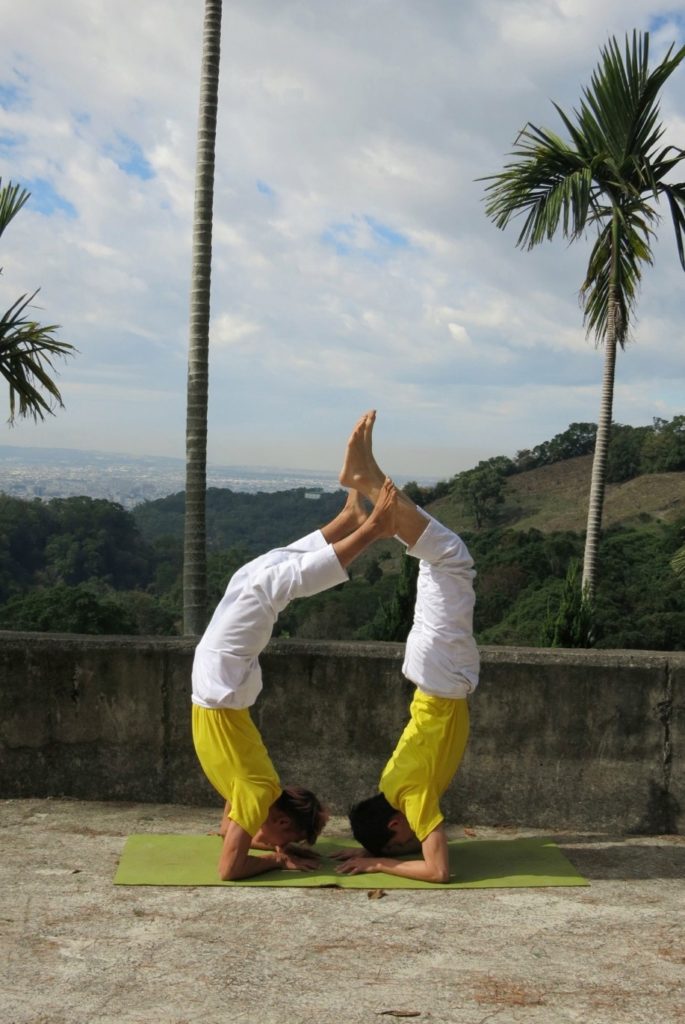
We need to practice flexibility and strength. Everyday life is like a beautiful yoga posture there is flexibility, ease, and there is strength. If you don’t have strength, you collapse, you cannot hold a posture, because there are different forces pulling you in different directions. You have to have strength to hold the posture. That means in life, you have to have yourself, have self-confidence, and be able to tune to your own true Self to receive infinite strength.
If you are able to tune-in to your true Self, you will be strong in all conditions. But if you only tune to some aspect of yourself, sometimes you will be strong, and when conditions change, then you will lose it. Therefore, you need to put yourself through different tests, different conditions, to see how you perform, to see if you are able to keep your balance and not resort to blaming someone else; and see if you can keep calm. Keep yourself happy, not just calm. You have to be joyful. Tuning into the heart that is joyful. All is nothing but a test of your strength and flexibility.
You need to know what to do and tune-in to your Self, stay very firm on your path and not lose yourself, because you are under the influence of other people either living with you or on the internet. Nowadays, people can enter your house through the internet. And they can touch and pollute your environment. On the path of yoga you have to be with yourself at all times, then you have to work out the relationships with people, because they are karmic relationships.
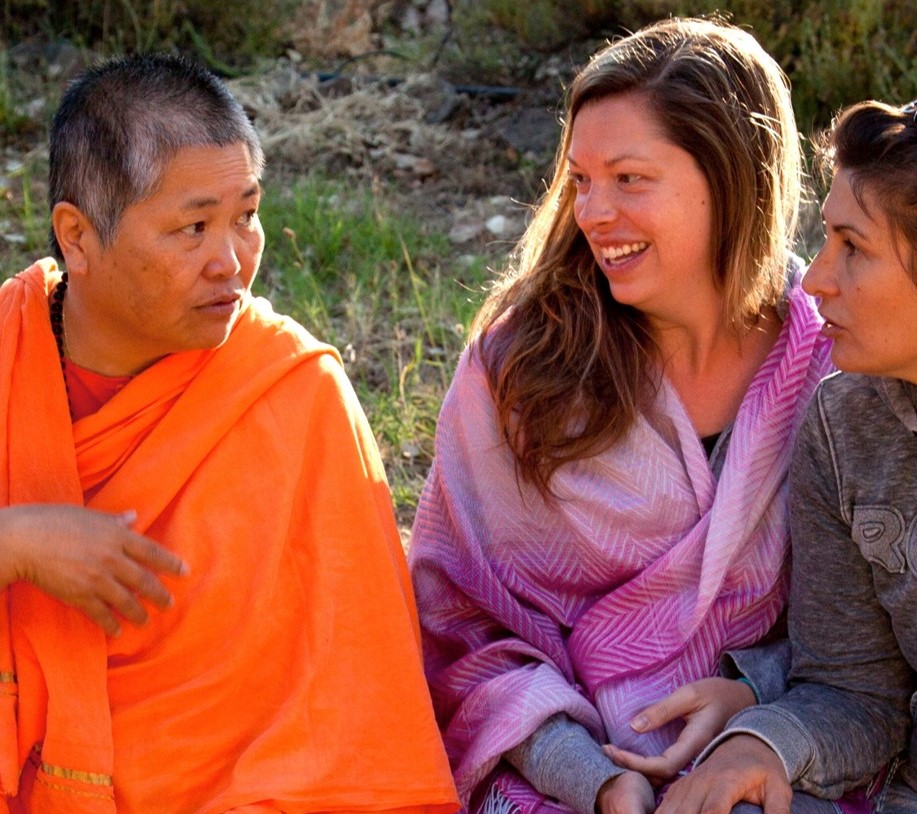
Karmic relationships
People that you come into contact with are the manifestation of your own karma, your own mind, your own thoughts, that you have accumulated throughout time, i.e., from past lives. We do not choose only one life. We have met many people from the past and we have reacted to them and thus we have drawn many conclusions and made many decisions that might be wrong. So that is how mental patterns are created. Mental patterns can be very deep and can feel like a prison. You feel that you need to get out. You encounter people in your life so that you can work out your own samskaras, your own impressions. You have a chance, an opportunity, to revisit your patterns, how you think about your own self, manifested as people around you.
This is a very deep and nice theory, you know, of yoga, that everybody is your own Self. And if you have some problem with another person, it is because you have a problem with your own Self. Because you have the problem of yourself and it has manifested in those particular circumstances with another for you to see it and correct your own thinking about yourself. There is nothing but the Self.

And then there is our ego idea, our attachment to yesterday. Again, Raja Yoga is very nice as it talks about our attachment, our association with the Antahkarana. Antahkarana means our own mind, our own subconscious mind, our own intellect, our own ego and our own Buddhi, our own intelligence. The problem is the association of your Self with your own instrument, your own mindset and you believe “this is me”. This is called egoism. There is egoism when you’re going to meet someone you think is different than yourself, the “other”.
At that time, your mind will just churn up, right? Because you take the information in your subconscious mind, you think, “I have been there, I have met this kind of person before. I have reacted like this. It worked before. I used this tool called a ‘hammer’ and it got me out of the situation.” Do you know how it works? When you have some difficulty, you just use a hammer and you jam it, in other words, you will just be very rude. And then people are scared of you and run away. Then, as you solve the problem, you might develop the habit of, you know, using the hammer, okay? Or you might use the habit of running away, of escaping, of avoidance.
It has worked, it has worked some time, but it can come back the same or a little bit different, you know, for you, and then you see that eventually your tool doesn’t work anymore. That tool of avoidance will not work, because it’s always the same thing coming and bothering you. The same reaction. So, you have to develop more tools, you have to be more sophisticated in your way of reacting. You have to unearth or uproot the tendency to identify with a certain habit of the mind.

The drama of identification with the habits of the mind
That is the beautiful analogy of association between the Atman or your own Self with the mechanism of your mind. In other words, Patanjali refers to the association of the seer, meaning you, and the instrument of seeing, the mind. You just lose yourself in the body and mind and believe that it is you. That’s a drama, a very big drama that is going on all the time.
Patanjali said that the cause of suffering is egoism and the likes and dislikes —the raga-dvesha. Raga-dvesha means the tendency of the mind to swing this way – liking, attraction – and to swing the other way – repulsion, avoidance. If you are subject to that egoism, believing what you feel and think is yourself, you will perpetuate your suffering.
Your mind will then be swinging this way, affirming what you like and swinging the other way, affirming what you don’t like, affirming what you would rather not have in your life, rather than learning from it. That is a beautiful teaching, the idea that you perpetuate the root cause of your suffering. Therefore, yoga comes with different kinds of teaching. Yoga suggests that you don’t follow your tendencies.
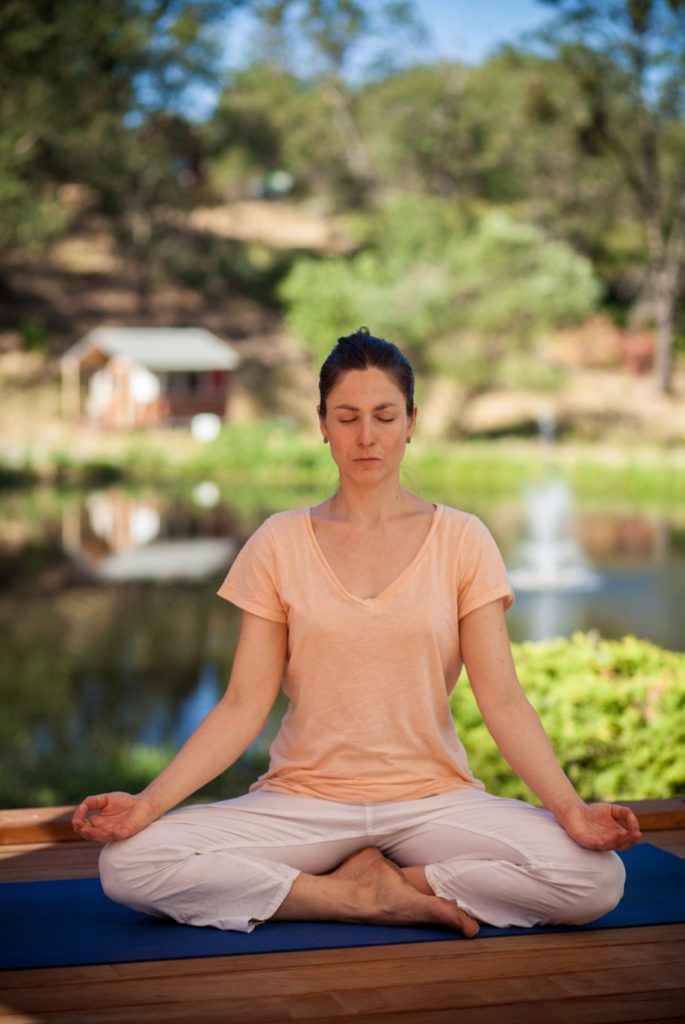
The practice of equanimity
If you like something, don’t like it too much. If you dislike something, don’t dislike it too much. Make the extremes slowly, slowly come together. If the extremes come together and you’re still happy, it means you are becoming stronger. When your mind swings to this end and you get what you like, then you are happy. And then when it swings back – because that’s the way it works, you have to swing back to the other side – when it swings back, you will meet with something you don’t like, and you are unhappy.
Your happiness is conditioned by an external factor. You cannot control things that come into your life. Even things that come into your life, you want to hold on to them to perpetuate your happiness. But it never really works because things are changing. Let’s say you like the circumstances of your relationship with this person, and you find that it’s just perfect. But it doesn’t last because it changes and you suffer.
So, you will have to be wise. To be wise means to understand how your emotions work, how your mind works. You have to consciously manage this condition of your mind for you to have peace or happiness that is stable for a long time. Because when you swing, the mind will go up and down like a roller coaster. You are happy in one condition and unhappy in another condition. But if you can manage your mind -we call it Yoga, equanimity-, you can temper these extremes. Then you don’t identify yourself with it and are more detached towards your own way of thinking.
Practice, practice, practice one thousand times to… 1) look away so you don’t react, 2) forgive so you don’t condemn, 3) keep loving when you feel hatred and judgment. This is how you can keep your mind steady and even.
The theory of yoga says that when your mind is calm and not agitated by thoughts or by likes and dislikes, you can then perceive your own true nature. It means, you perceive that beautiful Self, that joy, that happiness that is derived from within. We become stable, steadily happy if we are able to manage this, the mind.
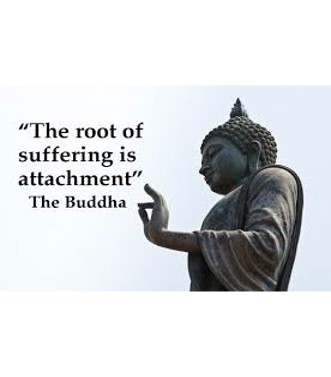
Otherwise, it is hit and miss. Sometimes you’re happy and sometimes you’re unhappy. Up and down, up and down, hit and miss. And you know, it tortures you. It’s not like you can accept this condition, but it tortures you when you are in that unhappiness, when you are disliking somebody or something, you are worked up. You are tortured by your own mind. It’s a terrible condition called affliction. Affliction is a misery.
Patanjali said, “The misery that is yet to be manifested is to be avoided”. That means, if you have this tendency of the mind to function like this, you will suffer, it will come up, it is not someone else’s fault. But if you understand the condition of the mind, you will work on it with yoga and meditation and positive thinking tools, and Bhakti Yoga tools. You just have to learn to work on your mind, to massage your mind, to not let it be too strong, to not let it be too soft.
An image that I like very much is “to be strong like steel and flexible like a blade of grass”. That’s what you want. You have to keep practicing, until you are able to do that. You can be extremely strong and extremely open. Extremely tolerant, extremely flexible, extremely loving. To be able to function in life you have already managed and learned many things, how to manage yourself with people, but you need to be better.
And you need to see your weaknesses. Some people are not able to speak their own mind. They are not able to speak their own mind without emotions, or calmly just discuss to help the other person see their own point of view. There is no harm in communication, but you will not be able to do that because you are too sensitive, you are afraid, you do not want to be hurt.
Or you have that prejudiced idea about people that they are stupid, they will not understand what you are saying. So, then you condemn them before you even open your mouth. These are the habits that we have. We need to tune and we need to become better and better and better every day. You will become better.
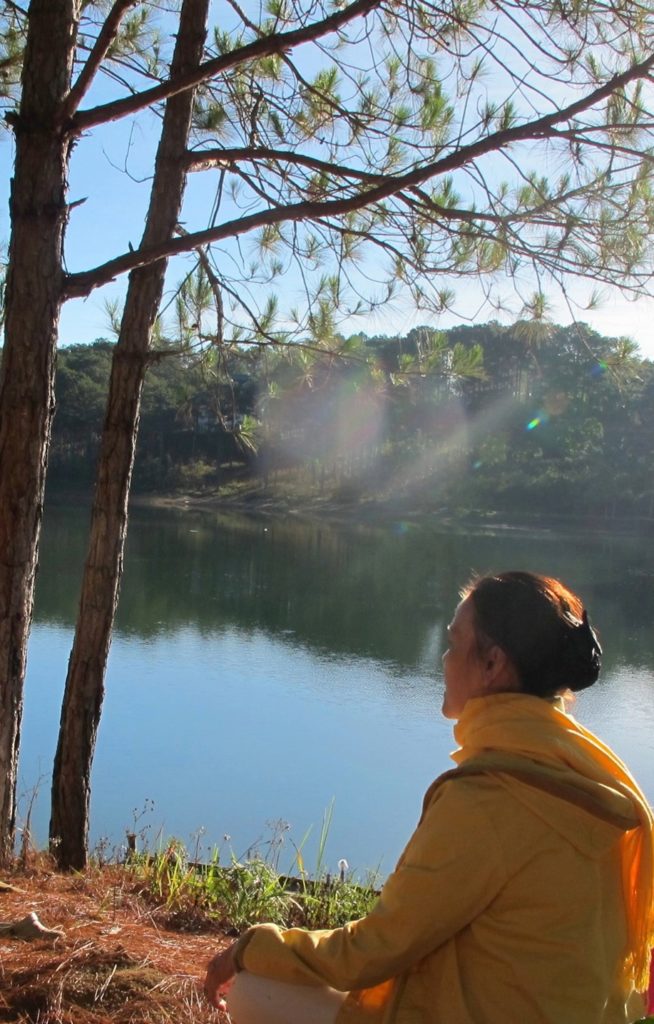
Self transformation with meditation
The best way is to meditate. When you meditate you to some level erase the samskaras, habits, and impressions in your mind and you become a new person. It’s like you refresh, you start everything fresh. And then all your judgments, your ideas, your tendencies evaporate and disappear. You will be surprised to see how you react in that state of meditative mind. You will say, “I am a new person. Normally I am so upset with the situation and yet I don’t see that I’m upset at all. Actually, everything is fine!” In this manner, you learn a new way of being!
Be vigilant – keep guard against your past tendencies
But if you don’t pay attention to your energy, you can fall down, like falling down from a posture. Because of this and that, you don’t pay attention, your prana goes down, your energy goes down, your sense of balance that was very good before, when you were able to maintain equanimity and balance, accidentally drops. You feel yourself functioning at your lowest level, with all the other tendencies that were already buried in your mind coming back up to attack you.
Then you start to condemn people, you start to fall into the bout of self-pity, you know, “nobody understands who I am,” and then, “I’m always like that,” and, “How terrible, the world is so negative and bad”. You have fallen into that whole habit you had before, of condemning, avoiding, or hiding, or running towards something you think will be better, escaping. Yoga says, “No,” you don’t run anywhere, you will not go anywhere, there will be no other place that is better. Now is better. The condition that you find yourself in is the ideal condition. Face it, whatever you have to face, face it, be strong, be calm.
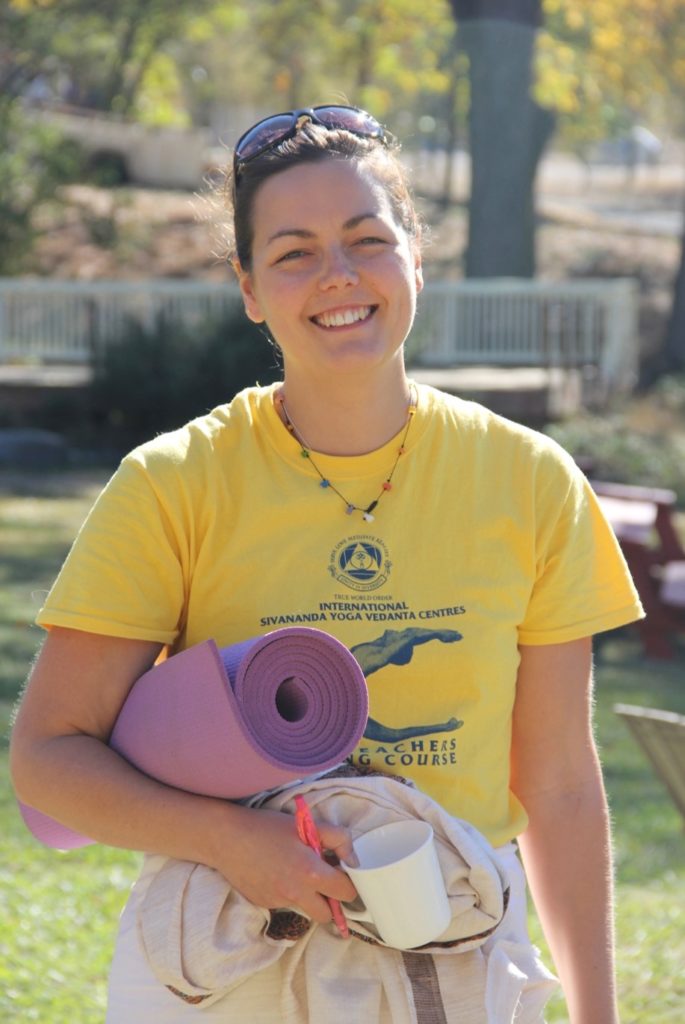
Practice, practice, practice
Practice more yoga. Bhakti Yoga is the best way. Practice Yoga asana, pranayama. Pranayama is very important. Pranayama will directly influence your emotions. It is quite effective to practice Japa Yoga, the repetition of mantra, with love and devotion. Get back to your high state of being, balanced, this is what you want. When you are awake, aware and poised in all conditions, you don’t run away, you just welcome everything with equanimity.
You are now a strong person going through life. You are not afraid of anything or anyone. You attain union. Union means you no longer function out of your habitual mind. But you function with your own Self, constantly connecting with your own Self and become very stable. You become, as we say, “the lighthouse” for others. You radiate that light all around you.
These are just a few things to explain why we need to “adapt, adjust, accommodate” and why in the event of an extreme situation, we have to “bear insult and bear injury”. Even when people insult you, create injury to you, and hurt you, you have to bear it. Why? Because you are paying your karmic debt.
I don’t really like to use the words ‘paying karmic debt’ because it feels negative. You’re not paying. You are learning new lessons. The lesson is there for you to learn. You need to learn it.
Even in extreme situations of feeling insulted or being injured you have to be calm, not lose your sense of self. You have to tap into your knowledge of what forgiveness means for you to be able to handle the situation. You have to forgive or change your perspective completely. You have to detach and step back so you can begin to see the big picture.
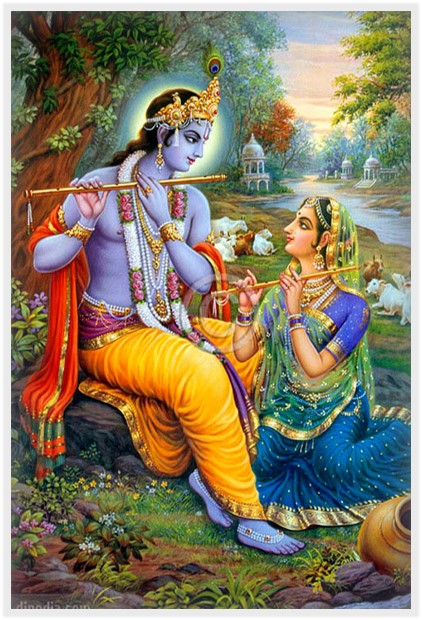
Yoga tools to self-regulate and to be free
Let’s say you have a problem with someone, but when you look around, thousands of people are running away from their homes because of fire, because of flood, because of COVID. You look at your little problem. Someone says an unkind word and you build it up into a whole big drama, wasting your energy.
Now you don’t see thousands of people, maybe millions of people, are suffering terribly. So, change the perspective. Do not think that you are so important and so big. Your ego makes you feel like that. Please remember this definition, it’s so nice, “the association of your Atman with your inner instrument”. This is the problem.
Jnana Yoga
To detach means to step back. It means to think: “It’s not about me here. My reaction, my thinking, my feelings are not so important. I am the immortal Self. I’m going to detach. I don’t want to continue this association that imprisons me. I want to get out.”. Detachment is the key. Detachment comes with remembering the Self.
Jnana Yoga helps you to change perspective. You might think, “This is not real. No, this is just Maya, it’s just a movie. It’s not real. So, step back.”
Bhakti Yoga
In Bhakti Yoga you say, “It is God’s will”. You say: “I don’t know. It’s not my will at all but it’s God’s will,” or “I don’t understand, I don’t control everything. God must know what he or she is doing and I’m going to accept this and be at peace.”
You can practice Jnana Yoga, you can practice Bhakti Yoga, also you can practice Raja Yoga and Hatha Yoga. You can balance your energy and concentrate your mind. Instead of letting your mind drop down, you strengthen your mind by focusing on whatever you like. All the thoughts disappear and your mind will increase vibration, become one- pointed. That mind is strong and healthy. When that same challenging situation comes back, you will not react the same way. You react the same way only when your mind is weak.

Raja Yoga
Make sure that you are concentrating on something that is neutral, something that is inspiring, something that is sacred. And then, let go of the distraction. You can say it’s just a distraction. If I spend time condemning people, it’s a distraction. I focus on myself instead of spending time looking at other’s faults and condemning them. That is Raja Yoga. Positive thinking means to work on yourself, replacing the negative thoughts with contemplation on the opposite thought. Let’s say you have the feeling of hatred and you replace it with the opposite thought.
You say, “Love, love, love, forget it. I cannot love and this person is not lovable, it is not possible.” The practice is not just replacing one word for another. You would have to contemplate on the virtue of love. You would have to contemplate and think about the virtue of compassion, of being soft, of being accommodating, of living in harmony, of non-violent communication. You would have to think about the opposite virtue quite a lot. That’s what Patanjali means when he said, “… constant pondering over their opposites.” (Chapter 2, verse 33)
It means to understand the thought, where it comes from, what ego trait aggravates it… then contemplate, think about other virtues that might work to counteract this thought. That is Raja Yoga.

Hatha Yoga
In Hatha Yoga, you use your body, you involve your body and your prana. You can change your prana, because prana is like electricity. If you change the flow of prana, or you cut the prana out from a certain place, or you divert the prana to another place, then the mind will not flow there.
Let’s say, you have too much power in your left brain, too logical, but life is not just logic. Then you have to cut the prana there, switch it to the opposite side. That’s called pranayama. You then have more feeling, more acceptance. You can say, “Anyway, I love you.” This love cannot come from just one side of the brain. That is called Hatha Yoga, that practice of balancing the energy that will help to balance your mind.
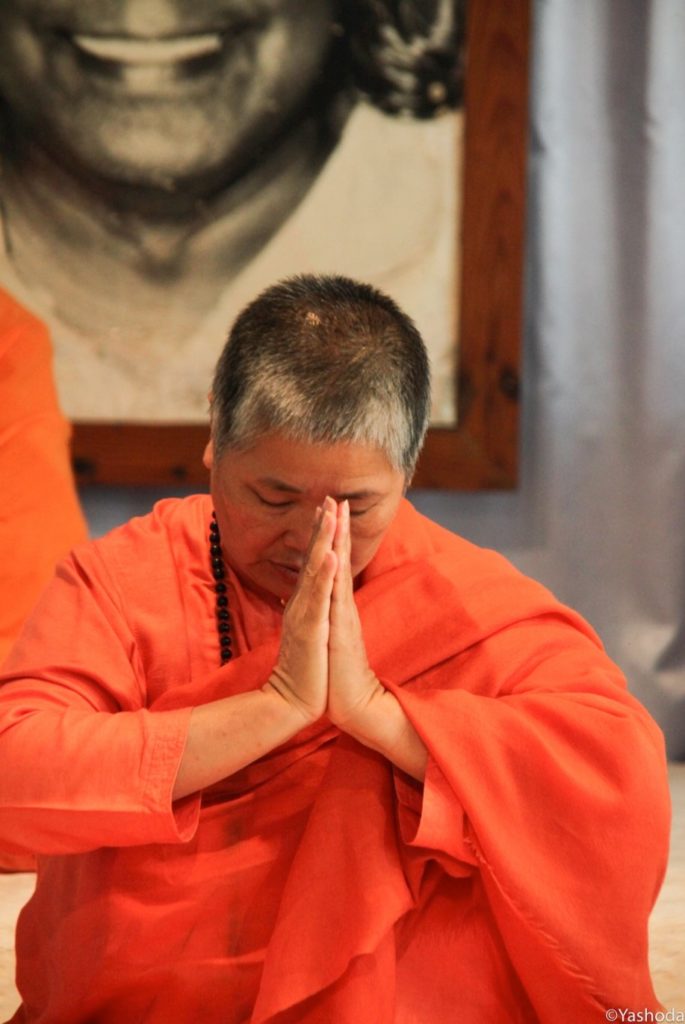
Karma Yoga
Karma Yoga is the idea of serving other people as your own Self. You think, “It is not about me, it’s not my time,” or “Nothing belongs to me,” or “My time is not mine.”
Usually, I do things only to serve myself. Karma Yoga teaches us that it’s not about me. I serve something bigger than myself. That will have stronger repercussions for the world and help a larger number of people. That’s what my life is about. I offer this energy. I am an instrument of the higher will to uplift this world. It is not about me gaining anything. Because if I gain something, what do I gain? I gain wealth. What do I do with money?
If you have too much money, you’re going to waste money. When you have a lot of money, what do you do? Most of the time, you are not really serving yourself, or serving anyone else. When you have lots of time, what do you do with your time? We waste our time a lot. We just waste time. It doesn’t help us and it doesn’t help other people.
But if every moment of your time is helping something bigger than yourself and you help to uplift other people just as you want to uplift yourself, that is a much better formula for happiness. That’s called Karma Yoga. Serve others as yourself. And let go of all ideas about yourself. It is called “giving up the result” or “offering up the result of your actions”. It means, “Let go of all ideas of what you gain or what you lose from your action, feel that you are the instrument and that you are serving other people as your own self or as God.”
These are all tools of yoga: Karma Yoga, Bhakti Yoga, Raja Yoga, Hatha Yoga, and Jnana Yoga. These tools help you to handle your relationships, these karmic relationships. They help you to learn these lessons about yourself.
People may use these teachings wrongly also. When they say karmic relationship, and go and point to the husband or the wife, the mother or child and say, “You are my karma, you are my debt. You are in my life and you are my debt. So, I’m going to live with you because I have to pay my debt”.

Take responsibility
This is a misunderstanding. It is not like that. The teaching says: “This is you. Don’t blame anyone else, ok?” A karmic relationship means you understand that it is you that are 100% responsible and involved in this situation, in this relationship. There’s nobody out there to blame. And there is nothing to be complaining about. But there is something that you need to do to uplift yourself and make your mind a little bit less angular. Swami Sivananda uses the word ‘angularity’ of the mind. That means a mind that is too fixed in a certain angle of vision.
You need to just round up the corners, make everything a little bit smooth. The person that is sattvic looks like a person that has no opinion, or has no kind of strength, but it’s not that. There is inner strength, they know that inner strength, they watch everything with detachment. They just go with whatever it is without losing their balance. That is absolute strength. It’s not just, “Look at me, you know how powerful I am, how intelligent I am, how experienced I am”. That is not strength because it will pull at your feet another time. That same strength will make you fall.
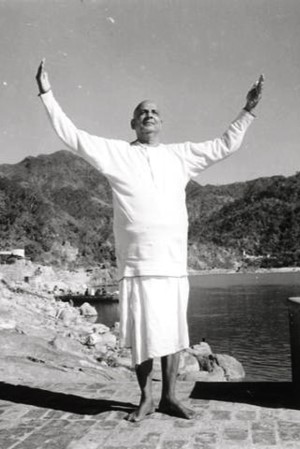
In reality, it is said that strength is actually more dangerous than weakness. Weakness makes you fall all the time. But when you fall from weakness, you slowly, slowly, build up your strength because you know that I’m not that strong. So, you are very careful. You gain a little bit and you are happy. When you are strong, you are absolutely not careful. You just lose yourself, you lose your vigilance, you lose the big picture. That’s when you fall. That’s when you go completely crazy, when something happens because you are not willing to accept it.
In summary, balance out your strengths and weaknesses. Be very careful. The blanket tool is to just keep doing sadhana every day, on good days, on the bad days, keep doing sadhana every day. It gives you that poise. It gives you that countenance in all conditions. Manage your mind. Manage your relationships. Manage your schedule. Don’t be too intense even though you can be. At the same time also manage your tamas, your laziness.
Hari Om Tat Sat
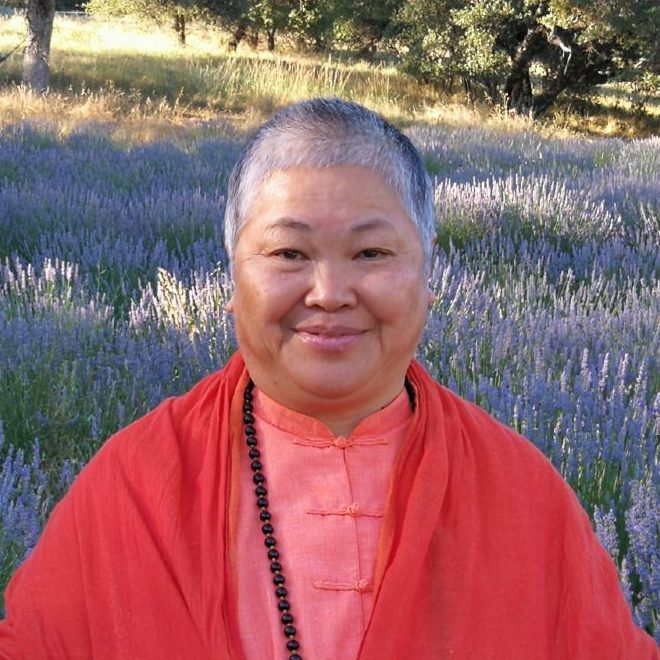
Swami Sitaramananda is a senior acharya of the International Sivananda Yoga Vedanta Centers and is director of the Sivananda Ashram Vedanta Yoga Farm, California and the Sivananda Yoga Resort and Training Center, Vietnam. She is acharya of China, Taiwan, and Japan as well. Swamiji is the organizer and teacher of the Sivananda Yoga Health Educator Training (SYHET) program, an 800-hour program on yoga therapy, accredited by the International Association of Yoga Therapists (IAYT).
Swami Sitaramananda is the author of “Essentials of Yoga Practice and Philosophy” (translated in Chinese, Japanese, Vietnamese, and Russian), “Positive Thinking Manual”, “Karma Yoga Manual”, “Meditation Manual”, “Swamiji Said, a collection of teachings by Swami Vishnu” in His Own Words. She is responsible for the Vietnamese translation of “Completed Illustrated Book of Yoga” (CIBY) and “Meditation & Mantras” by Swami Vishnu. Many of her video & audio lectures on Yoga life, philosophy, and psychology as well as articles and webinars can be found on this website.
Swami Sita is an ardent supporter of the integration of the Vedic sciences such as Vastu, Jyotish, Ayurveda, Yoga and Vedanta. She is an international teacher of the Sivananda Yoga Teachers’ Training Courses and Advanced Yoga teachers’ Training courses, as well as Meditation and Vedanta & Silence Courses both in Sivananda Ashrams in Vietnam and in Grass Valley, CA.
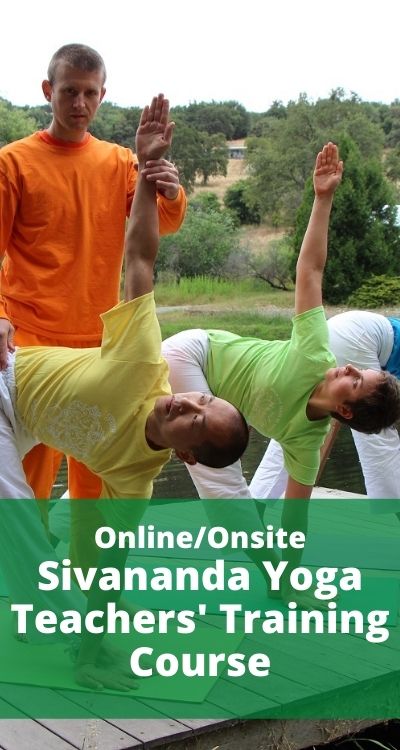


This information is very helpful. Will there be any future in-person trainings on relationships?
Yes for sure. No dates set yet. But please keep checking our newsletter and calendar. Many of our other courses give practical tools that help with relationships as well such as our Teacher training course or yoga health education course.